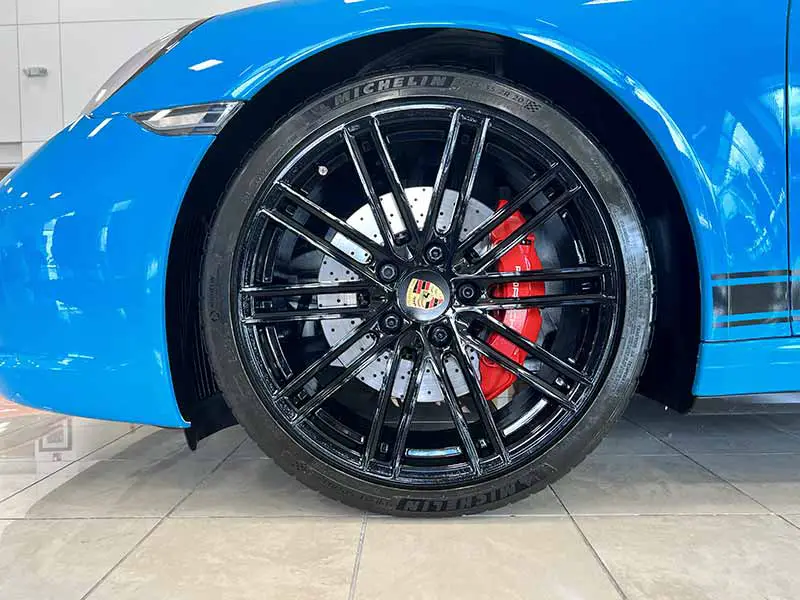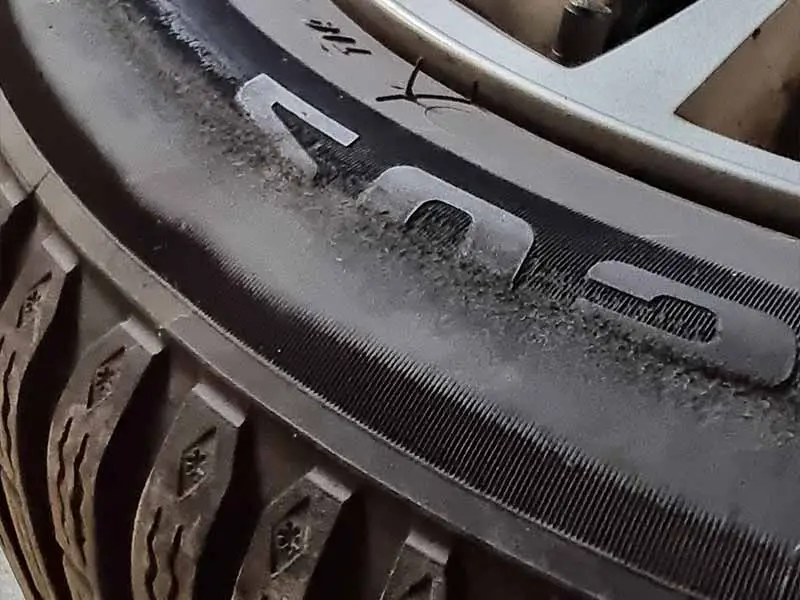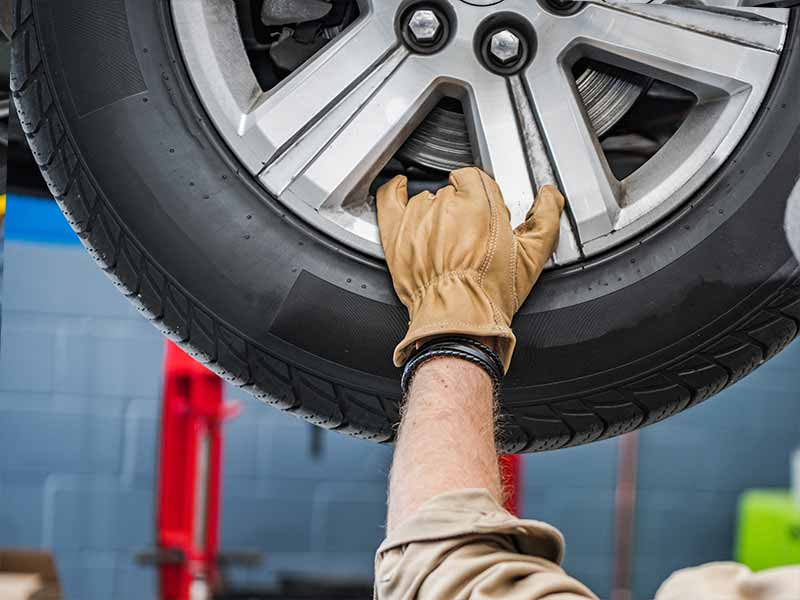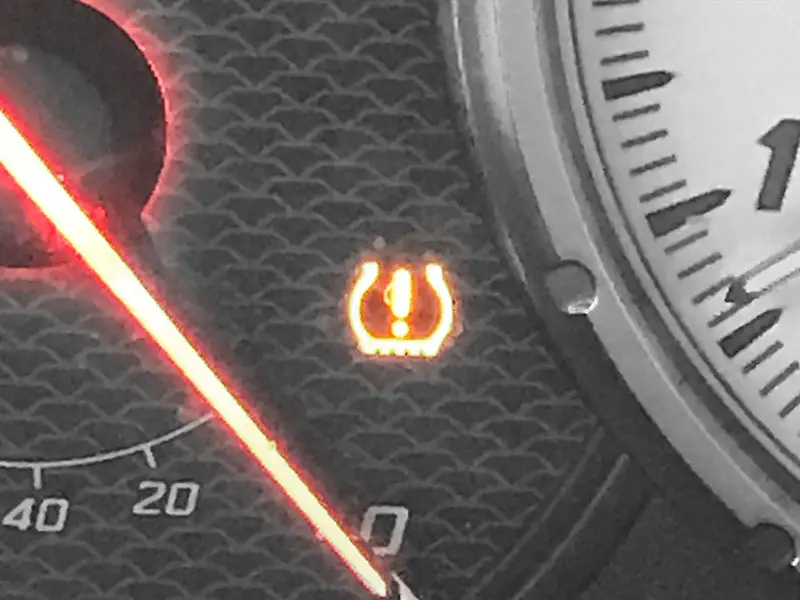Ever noticed that little light on your dashboard that looks like a flattened tire? It’s not just for decoration, and it’s not something to ignore. In fact, knowing what to do when that tire pressure light comes on could save you from a whole world of trouble, and even a potential accident.
Low Tire Pressure – What To Do
When your low tire pressure light comes on, you should promptly check your tire pressure with a gauge, compare it to the recommended pressure in your owner’s manual, and inflate the tires to the correct level.
If the light continues to illuminate or flash, you should seek professional assistance.
In this article, we’ll dive deep into the world of tire pressure, explaining why it’s so crucial for your vehicle’s performance and safety. We’ll unravel the mystery of the TPMS (Tire Pressure Monitoring System) light, and guide you step by step on what to do when it comes on. We’ll also cover tips for preventing low tire pressure issues, and what to do when you’re facing tire problems without a spare in sight.
Let’s take a closer look.

Understanding Tire Pressure: What It Is and Why It Matters
Tire pressure is the amount of air in your tire, and it’s usually measured in pounds per square inch (PSI). It’s more than just a number though; tire pressure is a critical aspect of your vehicle’s safety and performance.
Why does it matter so much? Well, consider these points:
- Safety: Properly inflated tires provide the best grip on the road, helping you steer and stop accurately. Underinflated tires, on the other hand, can cause poor handling, slower braking, and can even blowout!
- Comfort: Adequate tire pressure leads to a smoother ride. Too low or too high, and you’ll feel every bump and jolt on the road.
- Economy: Underinflated tires create more rolling resistance, making your vehicle work harder and consume more fuel.
- Longevity: Tires at the correct pressure wear evenly and last longer. Incorrect pressure can lead to premature tire wear or damage.

Getting to Know the TPMS Light
The TPMS (Tire Pressure Monitoring System) is like your vehicle’s sixth sense. It keeps an eye on your tires when you can’t. This system uses tire pressure sensors installed in each tire to monitor the air pressure.
You’ll know the TPMS is at work when you see an icon light up on your dashboard that looks like an exclamation mark inside a horseshoe. That’s the TPMS light, and it’s there to alert you about potential problems.
But remember, not all TPMS lights are created equal.
- A solid tire pressure light usually means one or more of your tires have low pressure. It’s your vehicle’s way of saying, “Hey, your tire could use some air!”
- A flashing tire pressure light is a bit more serious. It means there’s a problem with the TPMS itself. Maybe a sensor is malfunctioning, or the system has a glitch. It’s like your car saying, “Uh-oh, I’m having trouble keeping an eye on your tires!”

When the Tire Pressure Light Says “Low,” but Your Tires Look “Fine”
Now, here’s a head-scratcher: what if the TPMS light is on, but your tires look perfectly fine? Don’t worry, your car isn’t pulling a prank on you. It’s just that tire pressure can be tricky to judge by a quick glance.
Remember, tires lose air naturally over time, even if there are no punctures or leaks. Changes in temperature can also affect tire pressure. So, while your tires might look okay, they could still be underinflated. That’s why it’s essential to check your tire pressure regularly with a tire pressure gauge – it’s a more accurate method than eyeballing!
What To Do When Your Tire Pressure Warning Light Comes On
Uh-oh, your TPMS light just flicked on. But don’t panic! Here’s your game plan:
- Don’t Ignore It: That light isn’t just a decoration on your dashboard. It’s a warning that one or more of your tires might be underinflated.
- Check Your Tires: When it’s safe, pull over and give your tires a visual check. Look for obvious issues like a flat tire or a sharp object stuck in the tread.
- Use a Tire Pressure Gauge: This little tool is your new best friend. Use it to check tire pressure in each tire.
- Compare to Recommended Pressure: You’ll find the recommended tire pressure for your vehicle in the vehicle manual or on a sticker inside the driver’s door jamb. If any tire’s pressure is lower, it’s time to add some air.

Is It Safe To Drive With the TPMS Light On?
The answer to this depends on a few things.
If your TPMS light is solid and your tires don’t look flat, you can likely drive a short distance to inflate your tires, like to the nearest gas station. However, drive slowly and cautiously, as underinflated tires can affect your vehicle’s handling and stopping distance.
But what if the TPMS light is flashing, or one of your tires is significantly low on air, or even flat? In that case, driving isn’t the best idea. You could damage the tire, the wheel, or even lose control of your vehicle. If you don’t have a spare tire, consider calling for roadside assistance.
Remember, the TPMS light is there to help keep you safe. It’s always better to be cautious when it comes on, even if your destination is just a few blocks away.
What Risks Are Associated With Driving With the TPMS Light On?
Driving with the TPMS light on and ignoring it can lead to a few problems:
- Poor Vehicle Handling: Underinflated tires can make your car harder to steer and cause it to not respond quickly when you turn the steering wheel.
- Longer Stopping Distance: Low tire pressure can also increase your stopping distance. That means it could take you longer to come to a stop, which can be dangerous in an emergency.
- Tire Damage: Driving on an underinflated tire can damage the tire’s internal structure. This could lead to a blowout, where the tire suddenly loses all its air.
- Reduced Fuel Efficiency: Underinflated tires create more rolling resistance, which means your car uses more fuel.
- Premature Tire Wear: Lastly, tires with low pressure wear out faster. If you continually drive with low tire pressure, you’ll find yourself needing to replace your tires sooner than expected.
Handling Tire Problems When You Don’t Have a Spare
Running into a tire issue when you don’t have a spare tire can feel like a bad luck double whammy. But even then, there are steps you can take to handle the situation:
- Keep a Tire Inflator in Your Car: These nifty devices can inflate a tire in a pinch. Some even come with a sealant that can temporarily fix small punctures. But remember, these are short-term solutions, and you’ll still need to get your tire properly repaired or replaced soon.
- Consider Run-Flat Tires: If your vehicle came with run-flat tires, you could drive a limited distance even after a puncture. But note, it’s usually not more than 50 miles, and you should keep your speed down.
- Call Roadside Assistance: If you’re in a situation where you can’t inflate or repair the tire safely, or you have a blowout, it’s best to call for professional help.
Refer to Your Owner’s Manual
When in doubt, turn to your trusty owner’s manual. This book is like the ultimate cheat sheet for your car. It will tell you:
- The recommended tire pressure for your vehicle.
- How your specific TPMS works and what each light means.
- Whether your car comes with run-flat tires or a tire inflator kit instead of a spare tire.
- Instructions on using the equipment that came with your car, like a tire inflator kit or a tire pressure gauge.
Never underestimate the power of your owner’s manual. It’s there to help you understand your vehicle better and keep it in top shape. So next time you find yourself scratching your head over your TPMS light or tire pressure, grab that manual!
When No Spare Isn’t Rare
More and more modern vehicles are ditching the spare tire. Instead, they might have run-flat tires or come with a tire inflator kit. While this can save on weight and space, it also means you’ll need to be extra vigilant about your tire pressure. Regularly check your tire pressure and keep your tires in good condition to avoid unpleasant surprises on the road.

Preventing Low Tire Pressure Issues: Top Tips
Tired of seeing that pesky TPMS light? Want to avoid a surprise flat? Here are some proactive steps you can take:
- Regularly Check Your Tire Pressure: Use a tire pressure gauge to check your tire pressure at least once a month. Don’t forget to check the spare tire if you have one!
- Maintain Recommended Tire Pressure: Inflate your tires to the pressure recommended in your owner’s manual or on the sticker in the driver’s door jamb.
- Inspect Your Tires for Damage: Every so often, give your tires a once-over. Look for cuts, punctures, bulges, or objects lodged in the tread.
- Monitor Tire Tread Depth: While you’re at it, check your tire tread depth. Worn-out tires can’t grip the road well, making them unsafe.
- Rotate Your Tires Regularly: Rotating your tires helps them wear evenly, which can prevent certain tire pressure issues.
- Pay Attention to Temperature Changes: Air pressure decreases in cold weather and increases in hot weather. Adjust your tire pressure accordingly.
Keep An Eye on Aging Tires
Remember that tires naturally lose air over time. As they age, this process can accelerate. So, if your tires are getting up there in years, you may need to check their pressure more often.
Consider a Professional Inspection
If you’ve checked and inflated your tires, but that TPMS light keeps coming back on, consider having your tires professionally inspected. A tire professional can check for issues that aren’t immediately apparent, like slow leaks or problems with the TPMS sensors themselves.
Resources
Below are some links you may find helpful when learning about tires
- What you should do when a tire-pressure light flashes – Car and Driver
- Your tire-pressure warning light just came on. What do you do now? – Consumer Reports
Final Thoughts
In the world of tire maintenance, understanding the importance of tire pressure and the role of the Tire Pressure Monitoring System (TPMS) can make a world of difference. When the low tire pressure light comes on, prompt action in checking your tire pressure and inflating it to the recommended level is key to avoiding potential hazards and vehicle damage. But remember, even when the TPMS light is off, a monthly routine of checking your tire pressure can save you from future problems.
When faced with tire issues without a spare, don’t despair. Solutions like tire inflator kits, run-flat tires, and the assistance of professional services can help get you back on track. Remember, your vehicle’s owner’s manual is a treasure trove of information and solutions.
Good luck and happy motoring.





